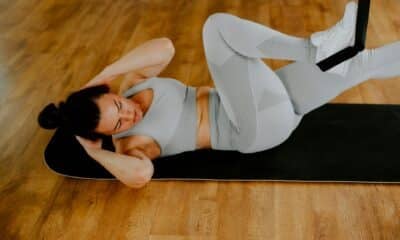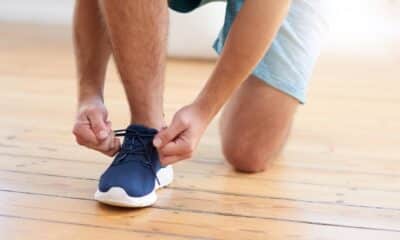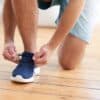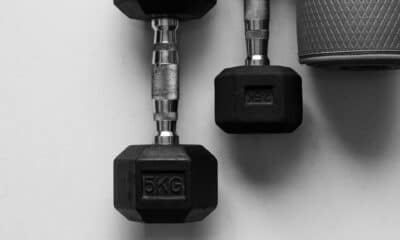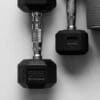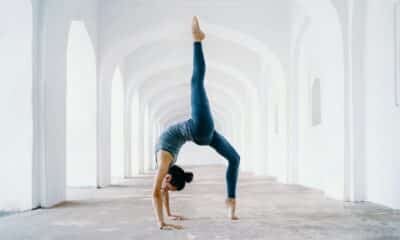Say Goodbye to Hip Pain Forever with These 5 Simple Moves
Whether it’s a sudden twinge in your hip while lifting your little one, or a persistent ache that forces you to skip the marathon you’ve trained hard for, hip pain can really throw a wrench in your daily life. And let’s be real—it often feels like a never-ending nuisance, one that can even make simple tasks feel daunting. But remember, you’re not alone in this struggle; hip pain is one of the most common complaints out there. The silver lining? Understanding what’s causing your pain can lead you to effective treatment and relief.
It’s essential to take a moment to assess your hip pain. While figuring out the underlying issue may seem overwhelming (trust me, we get it), with the right guidance, you’ll be able to identify specific symptoms and explore helpful treatment options.
In this guide, we break down the various causes of hip pain, expert recommendations for managing it, effective stretches and exercises, and crucial signs that indicate it’s time to consult a professional.
4 Common Causes of Hip Pain
Understanding the type of hip pain you’re experiencing is crucial to finding the right solution. While the various conditions may seem intimidating, breaking them down can simplify the process. Typically, hip pain falls into two categories: intra-articular pain, which originates from the hip joint itself, and extra-articular pain, which involves surrounding muscles, tendons, and bursae. Jon Mayer, a physical therapist at the Medical University of South Carolina, breaks it down for us.
1. Hip Osteoarthritis
If waking up brings along that stiff, creaky sensation in your hip, osteoarthritis might be the culprit. It’s a degenerative joint disease that often leads to pain, stiffness, and inflammation within the hip. Physical therapist Christopher Churchill explains that the discomfort usually impacts the groin, side of the hip, or the buttock area. You might notice that getting out of bed or standing up after a long period of sitting is increasingly challenging.
Unfortunately, this condition is more common in individuals over 50 or those with a family history of hip issues. So, if you’re finding it hard to do everyday things, like bending down to tie your shoes or feeling a grinding sensation in your hip, it’s worth scheduling a visit with your healthcare provider.
2. Overuse Injuries
For active folks, overuse injuries can be genuinely frustrating. These often include conditions like gluteal tendinitis, iliopsoas tendinitis, and bursitis—painful consequences of repetitive movements and overload, as noted by Cynthia Sampson, a physical therapist at Bespoke Physical Therapy. If you experience discomfort in the hip after extended periods of walking or running, or when lying on the affected side, you may be dealing with an overuse injury.
Churchill adds that many individuals with gluteal tendinopathy experience soreness specifically on the side of the hip, and this pain often intensifies during or after sports activities, especially if they’re repetitive in nature.
3. Hip Impingement (Femoroacetabular Impingement)
Another form of overuse injury is hip impingement, which arises from abnormal contact between the ball of your thigh bone and the hip socket. This can lead to sharp pain in the front of your hip or groin region, with sensations of clicking or locking as you move. Understanding what triggers this condition can help avoid further aggravation, especially for those engaged in sports like soccer, hockey, or dance, which require lots of rotational movements.
4. Labral Tear
A hip impingement may sometimes evolve into a labral tear, which occurs when the cartilage that lines the hip joint gets damaged. Symptoms can include difficulties with squatting or twisting motions and pain in the groin area. Athletes, particularly in high-impact sports, are often at risk, as repetitive movements can exacerbate the injury.
How to Ease Hip Pain
So, what’s the first step in addressing hip pain? Simple: rest and modify activities that agitate the discomfort. Churchill emphasizes the importance of avoiding movements that worsen your symptoms to prevent further irritation.
Next, it’s essential to seek the expertise of a licensed physical therapist who can conduct a thorough assessment. They can help pinpoint the underlying issues and create a tailored exercise plan. “A skilled therapist will evaluate your range of motion, strength, and joint function,” explains Mayer, “and help you avoid activities that could exacerbate your pain during recovery.” Once you’re ready to ramp up your strength, having a professional plan will be critical for a safe and effective recovery.
Sampson reinforces that no two hip pain cases are the same—specific conditions like tendinitis, bursitis, and impingement often require different strengthening exercises tailored to your individual needs.
5 Effective Stretches and Exercises for Hip Pain
If you’re eager to alleviate your hip pain or strengthen your muscles to prevent it in the future, consider integrating these expert-recommended stretches and exercises into your routine.
Keep in mind that exercise isn’t a one-size-fits-all remedy. It’s crucial to customize your program based on your specific situation and recovery goals. Mayer reminds us that while starting slow is often the safest route, progressively challenging yourself is equally important.
Of course, always be cautious: if any movement causes pain, stop immediately and consult your physical therapist to ensure you’re using correct technique and to rule out any hidden injuries.
1. Seated Glutes Stretch (Each Side Separately)
- Sit tall with your back straight and feet flat on the floor.
- Cross your left ankle over your right knee.
- Gently press your left knee down and bend forward at your hips, keeping your back straight.
- Try moving your torso slightly back and forth for a dynamic stretch.
- Hold for 30 seconds on each side for 3 sets.
2. Side-Lying Hip Abduction Against Wall (Each Side Separately)
Once you get the hang of these essentials, you’ll start feeling a lot better—and you’re on an excellent path to preventing future issues too. Remember, take your time, remain attentive to your body, and celebrate the small victories along the way. You’ve got this!
Let’s dive into some safe and effective exercises that can help keep your hips flexible and strong. Whether you’re an athlete or just someone trying to stay active, these movements can make a significant difference in your range of motion and comfort level. Remember, every journey starts with those first few steps—or in this case, reps!
1. Side-Lying Leg Lift
To get started, lie comfortably on your left side with your back against a wall. Bend your bottom leg while extending your top leg straight out. Prop yourself up on your left elbow and place your right hand on the floor in front of your ribs for stability.
Focus on engaging your core—this is key! Your left side should feel firm instead of sagging into the floor. Lift your right leg until it’s about shoulder height, feeling your outer thigh and hip muscles activate. Keep that knee pointing straight ahead, and don’t let your hips roll over.
Lower your leg back to the starting position with control. That counts as one rep. Aim for 3 sets of 10 reps on each side. Trust me, your hips will thank you!
Tip: If you’re having trouble sliding your foot along the wall, try placing a hand towel or washcloth under your top heel to make it smoother. It really can make those reps feel more effortless!
2. Standing Hip Controlled Articular Rotation (CAR)
This one’s a bit of a mouthful but quite simple once you get the hang of it. Start by standing on your right leg while lifting your left knee up toward your chest until it’s at hip height. Rotate your left leg out to the side, then sweep it behind you, and return to the starting position. Place your left foot back down, and that’s one rep.
Try to do 1 set of 5 reps on each leg, circling both clockwise and counterclockwise. You’ll be surprised at how much this helps improve your balance and mobility!
Tip: Be careful not to arch your lower back. If you find yourself wobbling, hold onto a chair or countertop for support. Balance doesn’t always come easy, so don’t be too hard on yourself!
3. Half-Kneeling Hip Flexor Stretch
Now let’s give those hip flexors some love. Start in a half-kneeling position with your left foot forward. Place your hands comfortably on your hips and lean slightly forward. You should feel a nice stretch in your left quadriceps and hip flexors. Hold that position for 30 seconds and repeat for 3 sets. This stretch can feel incredible after a long day sitting!
4. Banded Glute Bridge
Grab a mini resistance band and loop it just above your knees. Lie back on the floor with your arms by your sides, knees bent, and feet flat on the ground, hip-width apart. Keep your feet close enough to your hips that you can easily reach back and touch them.
Now, tuck your tailbone slightly and squeeze your glutes and core. Press your feet into the floor as you lift your hips up towards the ceiling, forming a bridge. Hold that position for about 3-5 seconds and then lower back down. Do 3 sets of 10 reps, and you’ll really feel your glutes working!
When it’s Time to See a Doctor
So, you’ve noticed a new ache after hitting the squat rack a little too hard. Or, perhaps those stairs have become a bit more daunting, and you find yourself hesitating to chase after your kids. These could be signs it’s time to schedule a visit with a doctor.
Listen to your body! Symptoms like numbness or tingling radiating down your leg, feelings of instability, or locking in the hip are not to be ignored. As expert Churchill points out, these signs should prompt you to seek professional advice.
It’s easy to get drawn into the rabbit hole of social media for DIY solutions. But take it from Mayer, who sees many patients worsen their conditions by trying random exercises they find online. Everyone’s body is different. Getting a personalized assessment will ensure you address your specific pain points effectively, allowing you to return to your favorite activities with renewed confidence.
Your well-being is paramount, so don’t overlook those important signs. Seeking expert advice can often lead to better outcomes in the long run.


